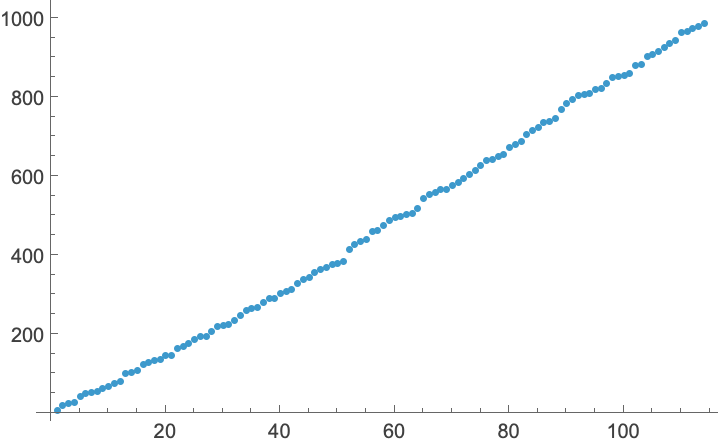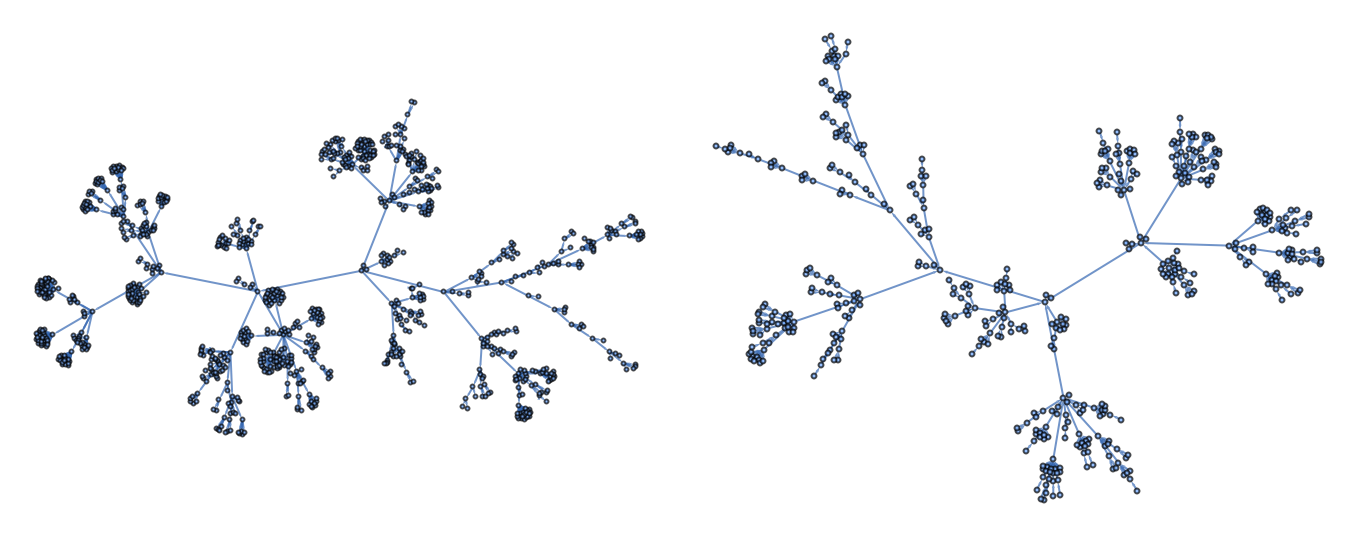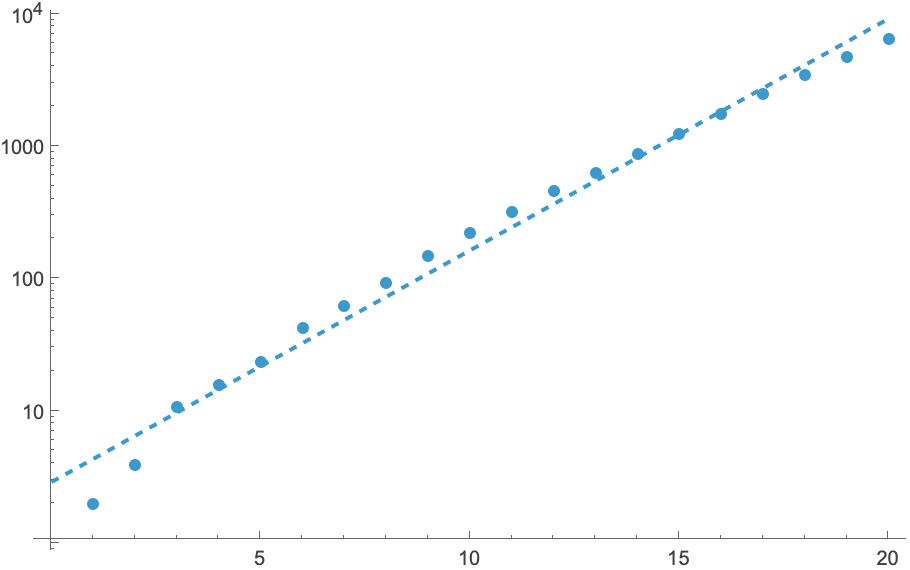Examples
Basic Examples (2)
Find all integers m such that ϕ(m)=1000:
Check:
Scope (2)
Find all 6535 integers m such that ϕ(m)=1020:
Verify that these are the correct solutions:
It takes only a fraction of second to find all solution for the numbers below on a modern computer:
Properties and Relations (2)
EulerPhiInverse returns an empty list for all odd integer except 1:
List non-totients:
Show that non-totients have no preimage under Euler's totient function:
Possible Issues (2)
EulerPhiInverse only handles positive integers. Otherwise, it returns unevaluated:
The number of solutions may grow rapidly for those inputs with prime factors p such that p-1 is highly composite:
Increase the second argument to get all solutions for x such that EulerPhi[x]=1028:
Neat Examples (3)
Numbers k such that EulerPhi[x]=k has exactly 2 solutions (OEIS A007366):
Visualize the data:
A pair of dual graph: two integers m and n are connected if ϕ(m)=n on the left and ϕ-1(m)=n on the right:
The graph on the left hand side seems denser than the right because the inverse of ϕ is a multivalued function:
Number of integers k such that EulerPhi[k]=n (OEIS A072074):
Plot the data and its logarithm approximation:
Publisher
Shenghui Yang
Related Links
Version History
-
1.0.1
– 15 October 2025
-
1.0.0
– 06 October 2025
Related Resources

![seq = Select[Table[i, {i, 2, 1000, 2}], With[{b = Length[ResourceFunction["EulerPhiInverse"][#]]}, b == 2] &];
Short[seq]](https://www.wolframcloud.com/obj/resourcesystem/images/f00/f00ee088-9bd6-4672-b5c5-3932fd5d6a0c/1-0-0/3239be9329c07afd.png)


![g1 = Graph[
Table[With[{epi = ResourceFunction["EulerPhiInverse"][i]}, If[epi != {}, i -> # & /@ epi, Nothing]], {i, 2, 500, 2}] // Flatten];
g2 = Graph[Table[i -> EulerPhi[i], {i, 2, 500}]];
GraphicsGrid[{{g1, g2}}]](https://www.wolframcloud.com/obj/resourcesystem/images/f00/f00ee088-9bd6-4672-b5c5-3932fd5d6a0c/1-0-0/2e156a7fe024ca70.png)


